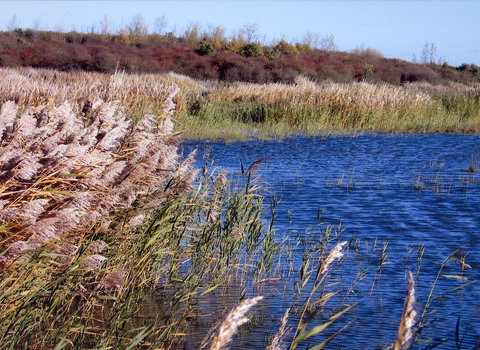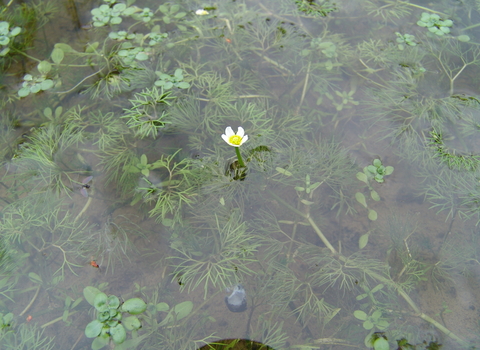At former brick works site Dogsthorpe Star Pit nature reserve, Peterborough, increased volumes of flood water meant that a new pump was needed to cope more efficiently, as well as pump house modifications and new habitat creation for aquatic invertebrates - especially water beetles. Thanks to a grant of £15,423 from Tarmac Landfill Communities Fund, via the Derbyshire Environmental Trust, plus £1000 from John Lewis, all of this work has now been successfully completed.
Salts from the exposed Jurassic clays, while good for rare aquatic invertebrates, are hard on pumping machinery. After long term exposure to these harsh conditions the previous pump corroded and failed, and wasn't economically viable to repair.
Advice from a hydrological engineer listed the need to:
- replace the pump to preserve the habitats that make the site special
- modify the pump housing to increase water flow and prolong the life of a new pump
- build a weed screen in the channel to stop floating vegetation from blocking inlets
- install a pump control panel and float level regulator (independent of the pump itself) to improve control and prevent damaging stop-start operation
These hydrological procedures have now taken place resulting in pumping being more efficient, reducing long term electricity costs. The pump is vital to get excess water out from a channel on the pit floor, up an embankment and into Carr Dyke. This year some shallow pools - so important for aquatic insects - have also been created, adding to an existing mosaic of pools, critical for water beetles (63 species of water beetle have been recorded over the years) and other invertebrates which seek refuge in isolated pools away from fish.
Cambridgeshire Senior Reserves Manager Matt Hamilton said: “Over the past year the pit floor had flooded and put at risk much of the key habitat and species that make the site special. Our pump had failed and needed to be replaced but the pandemic prevented the work being done. To restore lost habitat and give more control in future we have enhanced the pump chamber inlets and feeder channel and installed a weed screen to help prevent blockages. In addition, areas of bare ground and a series of new pools and scrapes of varying sizes shapes and depths have been created across the pit floor, this is to cater for the rare stoneworts and invertebrates found here.
“These works have ensured that, despite dire flooding, the site continues to be excellent habitat for a range of species, including its nationally important water beetles, which our surveys have confirmed are still present.”
During a 2021 summer survey 33 water beetle and 11 bug species were recorded in the space of one day, including four Nationally Scarce species, along with plenty of other species uncommon in our region and various species associated with fenland clay pools.









